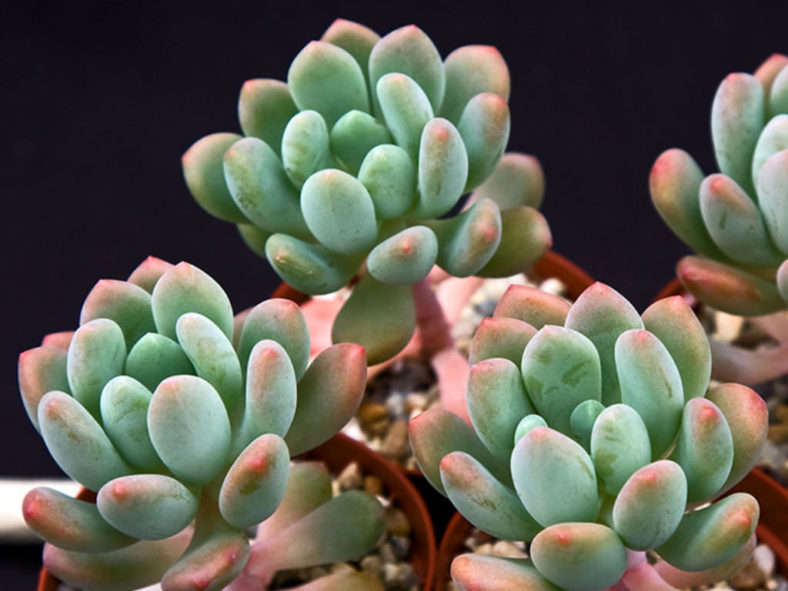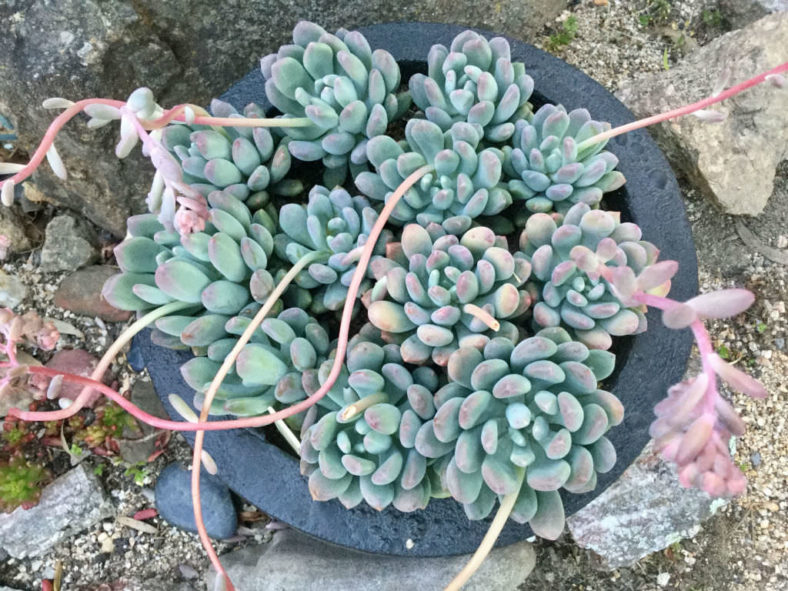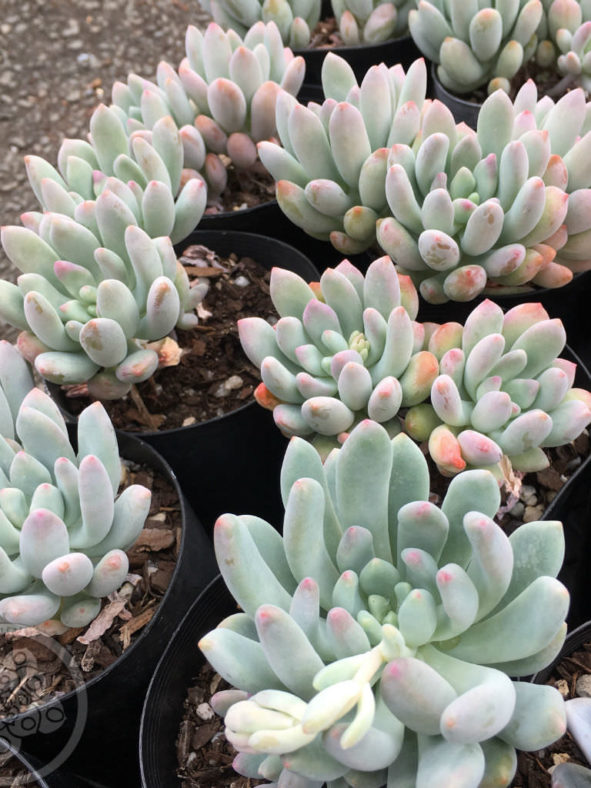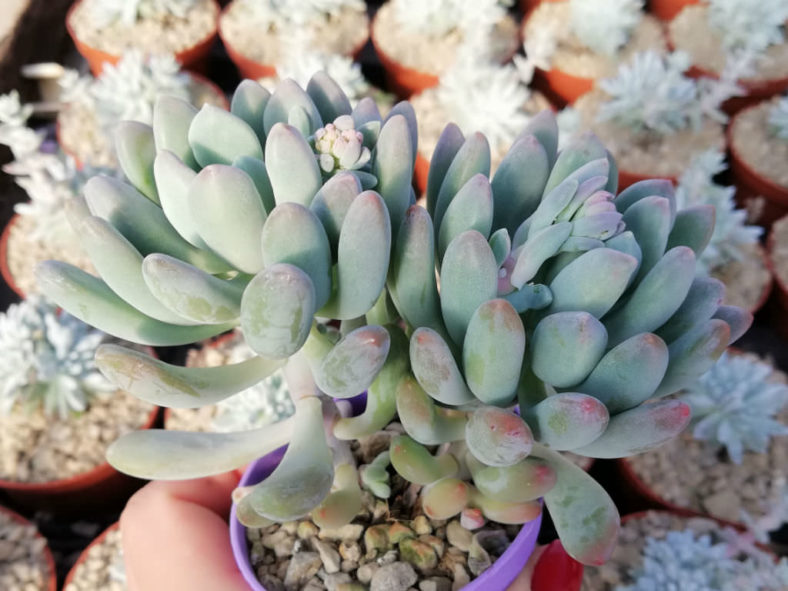Scientific Name
×Pachyveria 'Clavifolia'
Common Name(s)
Jeweled Crown, Powdered Jewel Plant
Synonym(s)
Echeveria elegans 'Gray Red', Echeveria 'Cana', Echeveria 'Gray Red', Echeveria 'Grey Red'
Scientific Classification
Family: Crassulaceae
Subfamily: Sempervivoideae
Tribe: Sedeae
Nothogenus: ×Pachyveria
Origin
×Pachyveria 'Clavifolia' is an old hybrid created by Jean-Baptiste A. Deleuil of Marseilles and first listed in his nursery catalog in 1874 and described by Alwyn Berger in "Gartenflora" in 1904. According to Deleuil, it results from a cross between Pachyphytum bracteosum and Echeveria rosea. However, this parentage is not credible as the slightest trait of Echeveria rosea is absent in this hybrid.
Description
×Pachyveria 'Clavifolia' is an attractive succulent with short stems that terminate in dense rosettes of gray-green leaves covered with a fine, waxy bloom. The rosettes can reach a diameter of 2.4 inches (6 cm). The stems can grow up to 6 inches (15 cm) long. The leaves are fleshy, slightly upcurved, flattish, with slightly pointed tips, and can measure up to 1.8 inches (4.5 cm) long and 0.6 inches (1.5 cm) wide. The tips and margins of the leaves usually have a pink or red tinge that is most prominent when exposed to full sun.
The bell-shaped flowers have orange-red petals and sepals the same color as the leaves. They appear in dense clusters on upright stalks that can grow up to 6 inches (15 cm) long, usually in spring.

Hardiness
USDA hardiness zone 9a to 11b: from 20°F (-6.7°C) to 50°F (10°C).
How to Grow and Care
Pachyphytum will not tolerate frost well. Temperatures below 20°F (-6°C) will kill the plant, and temperatures that may go below 45°F (7°C) during the extended period should be avoided. Pachyphytum tolerates high heat and intense sunlight. As with most Crassulaceae, Pachyphytum can tolerate (and even appreciate) poor soil conditions, so long as it is well-draining. Pachyphytum can thrive in full or partial sunlight.
Allow the soil to dry out before watering, and avoid getting water on the leaves. The plants will require more water in winter as winter begins its active growth season. If you are unsure when to water your Pachyphytum, watch the lowermost leaves for signs of drying and water them then. Pachyphytum is FAR more likely to survive under-watering than over-watering. The thick, fleshy leaves will appear wilted and slightly "under-full" when they need water.
Leaf-cutting entails cutting a young leaf from near the center of the rosette. Leave the leaves in the open air for a day to allow the wound to callous over.
See more at How to Grow and Care for Pachyphytum.
Forms
Links
- Back to nothogenus ×Pachyveria
- Succupedia: Browse succulents by Scientific Name, Common Name, Genus, Family, USDA Hardiness Zone, Origin, or cacti by Genus
Photo Gallery
Click on a photo to see a larger version.


